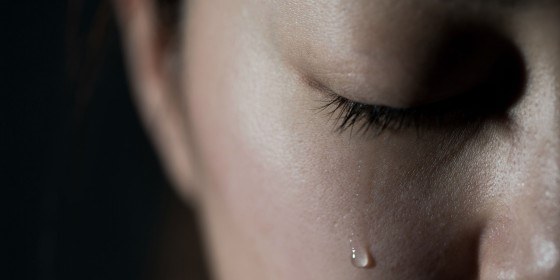
A sad movie ending, a breakup, an onion chopped into slices, a blow or contusion, or fits of laughter may bring us to tears, a liquid that has many functions.
Lachrymal glands produce them continuously, and can generate between 55 and over 110 liters of tears per year, thus contributing to maintaining daily eye health and communicating emotions.
Our body generates three types of tears:
The first one are basal tears, that constantly lubricate, nourish and protect the cornea, a lens located at the most frontal area of the eye, that allows light going through it and protects the iris, the pupil and the anterior chamber. Basal tears serve as a constant protection to the eye from the outer world, and keep dust and dirt away.
The second type of tears are reflex tears, that are produced when the eyes try to eliminate irritating and damaging substances such as smoke, foreign bodies or particles, or some molecules contained in onion which irritate the cornea. Lachrymal glands release a higher amount of these tears when compared to basal tears. They may also contain a higher number of antibodies in order to help fight the bacteria.
The third type of tears produced by our eyes are emotional tears, generated in case of joy, sadness, fear and other emotional states. Some experts claim that they contain hormones and proteins that are not present in basal or reflex tears.
Tears are not only saline, but they also have a structure that contains enzymes, lipids, metabolites and electrolytes. They have three layers:
Lachrymal glands are located above each eye and are the ones responsible for producing tears. Whenever we blink, tears are spread over the eyes’ surface and drained through lachrymal puncta, small holes located in the upper and lower eyelid corners. Then, they travel through lachrymal canals and then through a duct until they reach the nose, where they are either evaporated or reabsorbed.
In some cases, lachrymal canals may experience obstructions. In children, this is a condition that often resolves on its own; in adult cases, it may be due to an eye infection, inflammation, injury or tumor, and could lead to other eye conditions, such as dacryocystitis, an inflammation in the lachrymal sac.
When we produce a great amount of emotional tears, they block the lachrymal drainage system, which makes tears spill out our eyes and roll down our cheeks.
Basal tear production is reduced over time, and may lead to the development of dry eye syndrome, a fairly common condition in people who experience hormone changes, such as women during pregnancy or menopause. Moreover, the use of contact lenses and of some medications as antihistamines or antidepressants may also lead to dry eye, which, in turn, may cause a higher disposition to suffer from blepharitis, which is a common cause of eyelid irritation and inflammation.
When we experience dry eye, it is advisable to see an ophthalmologist and stick to the following guidelines for a better eye moisture:

Contact us or request an appointment with our medical team.